The cost to install a central AC unit depends on various factors such as the size and type of the home, AC unit, compressor type, and labor cost.
According to Angi.com, the national average cost to install an AC unit is $5,870. The overall cost varies between $3,883 and $7,910. Moreover, you cannot save money by going for DIY installation. A low-end central AC may cost as low as $1,500, and a high-end one may cost up to $12,000.
A central AC unit is not a DIY job because it involves working with refrigerant and electricity. It is best to hire a professional for this task.
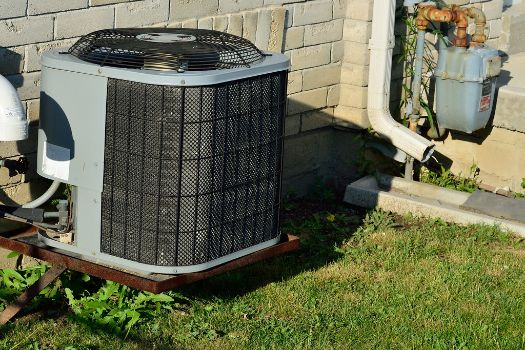
Factors That Affect Central AC Installation Cost
Home Size
The size of your home largely influences the AC unit size you’ll need. The larger the home, the more cooling capacity is required, leading to more powerful and expensive units. For instance, a house that is 800 sq. ft. might only need a 1.5-ton unit (costing around $1,500-$2,500), while a 3,000 sq. ft. house might need a 5-ton unit (costing up to $6,000-$8,000).
Climate
The climate where your home is located will dictate how much cooling capacity you need. A larger and more efficient unit will be needed for hot climates like Arizona or Florida, potentially increasing the cost by up to 20-40%. Cooler climates may get by with smaller or less efficient units, reducing costs.
Home Type
The type of home you have will affect the installation costs. Mobile homes might need smaller, less expensive systems, costing around $1,000-$3,000. Multi-story homes or older houses requiring extensive ductwork modifications could increase costs by several thousand dollars. Newly constructed or under-construction homes could also have lower installation costs since HVAC systems can be integrated during construction.

Unit Size
Unit size, measured in BTU or tons, directly affects the cost. A 2-ton unit may cost around $2,500, while a 5-ton unit can cost up to $5,000 or more. Selecting an appropriate unit size for your space is crucial for efficient cooling and long-term savings on energy bills.
Unit Type
Central AC units, which cool the entire home, are typically more costly than localized units due to their wider coverage and complexity. A central AC unit can cost between $2,500 and $7,500, while window or portable units are usually under $1,000.
Compressor Type
Single-stage units are typically less expensive but operate at full capacity all the time, making them less efficient. They can cost around $1,000-$2,000. Two-stage units are more costly (around $2,000-$3,000), but they can operate at a lower capacity when full cooling power isn’t needed, making them more efficient and potentially saving you money in the long term.

Unit Efficiency
AC units with higher SEER ratings are more efficient but also more expensive. A unit with a SEER rating of 13 might cost around $2,000, while a high-efficiency unit with a SEER rating of 21 could cost $3,000 or more. But remember, a high SEER unit can significantly reduce your energy bills over time.
Unit Brand
Different brands come at different prices. For instance, a Carrier unit might cost between $3,500 and $7,500, while a Goodman unit might only cost $2,500 to $6,000. Remember, the brand can also influence the unit’s durability and performance.
Labor
The complexity of the installation largely influences labor costs. If your home already has the necessary ductwork, labor costs may range from $500 to $2,000. If new ductwork needs to be installed or significant modifications need to be made, labor costs can significantly increase, possibly exceeding $3,000 or more.
Related Guide: How Much Does It Cost To Install Solar Panels?

Additional Factors That Affect Central AC Installation Cost
Controls and Zones
A multi-zoned system with sophisticated controls can increase costs but offers greater flexibility and efficiency. This lets you cool specific home areas independently, reducing unnecessary energy usage. Adding zoning to a system can increase costs by $2,000 to $3,000 per zone, while advanced thermostats and controls can cost between $200 and $500 each.
Ductwork Installation and Repair
Ductwork is critical for a central AC system. If your home doesn’t have it or existing ducts are in poor condition, installation or repair is necessary, increasing costs. The price of ductwork installation can range from $1,000 to $5,000, and repair costs typically range from $300 to $700.
Plumbing & Electrical Work
Plumbing and electrical modifications might be necessary to accommodate the new AC system, especially in older homes. This can increase costs significantly. Expect to pay between $500 to $2,000 for minor electrical and plumbing changes, but complex modifications could be much more expensive.
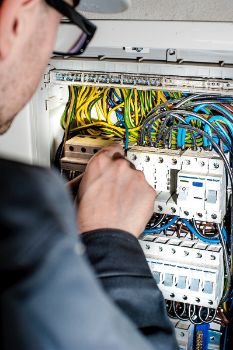
Existing HVAC System Removal
If you have an old HVAC system, it must be removed before the new one is installed. Removal can cost between $300 to $1,000, depending on the size and complexity of the existing system.
Home Modifications
Home modifications may be needed to accommodate the new AC unit, such as creating space for the outdoor unit or making structural modifications. Costs vary greatly depending on the modifications needed but typically range from $500 to $2,000.
Mold & Asbestos Testing & Removal
If there’s a risk of mold or asbestos in your home, particularly in older homes, testing, and removal are essential for safety during installation. Testing can cost a few hundred dollars, while removal can range from $500 to $4,500, depending on the extent of the problem.
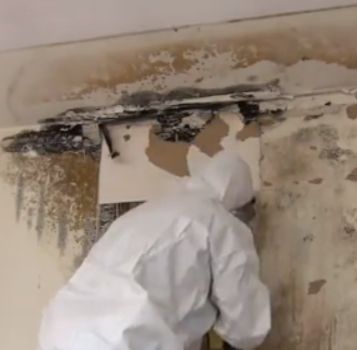
Permits
You’ll likely need permits for the AC unit installation. The cost varies by region but generally falls between $250 to $500. Your contractor usually handles this, but it’s best to confirm to avoid problems.
Additional Warranties
Some contractors offer additional warranties that extend beyond the manufacturer’s warranty. These can give added peace of mind but increase the overall cost. An extended warranty can cost between $50 to $500, depending on the length and coverage of the warranty.
Also Read: How Much Does It Cost to Build a House?
Central AC Cost by Unit Type
Split System
A split system central AC comprises two main parts: the outdoor unit, which houses the condenser and compressor, and the indoor unit, which contains the evaporator coil and air handler. These are commonly used due to their high efficiency and quiet operation. They allow for more flexibility in installation since the indoor and outdoor components can be located far from each other.
However, they can be more expensive due to their two-part nature and might require more complex installation. The cost typically ranges from $4,000 to $7,500, including installation.
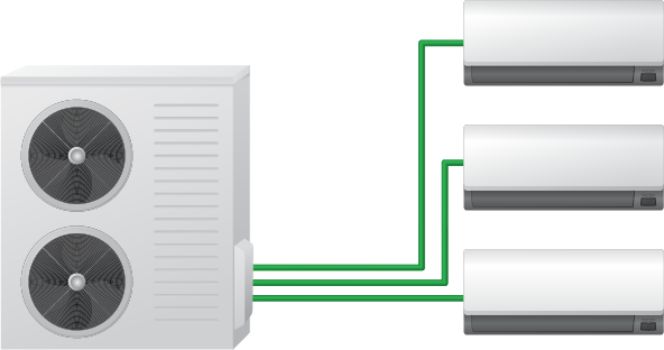
Packaged AC System
Packaged AC systems contain all the components in one unit, typically outdoors. This can benefit homes with limited indoor space, as it doesn’t require an indoor unit. However, since the components are located outside, they might have a shorter lifespan due to exposure to the elements. A packaged AC system tends to be less efficient than a split system. A packaged AC system costs from $4,000 to $8,500, including installation.
Packaged HVAC
Lastly, Packaged HVAC systems are similar to packaged AC systems but also include heating capabilities. This all-in-one solution can benefit homes in regions with colder climates, as it handles both cooling and heating needs. This means you won’t need a separate furnace, potentially saving space and simplifying maintenance.
However, like the packaged AC system, the outdoor location of components might decrease the system’s lifespan. A packaged HVAC system can range from $9,000 to $10,900, including installation.
Signs that You Need a New AC Unit
AC Age
Most central AC units have a lifespan of 15-20 years. If your AC unit is approaching or has exceeded this age range, replacing it with a more efficient model may be more cost-effective. Older units can break down more frequently and may not provide optimal cooling, leading to discomfort and higher energy bills.
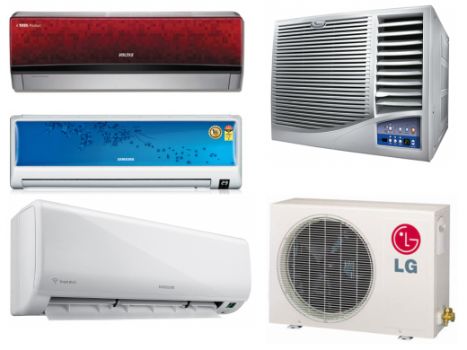
Unusual Noise and Excessive Dust
If your AC unit is making unusual noises, such as grinding or squeaking, this could indicate that it’s nearing the end of its lifespan. Also, if you’re noticing more dust in your home, this could mean your AC system isn’t filtering the air as well as it should, suggesting a need for replacement.
Increased Energy Bills
A sudden increase in energy bills can indicate that your AC unit is not operating efficiently. As AC units age, they often need more energy to produce the same amount of cooling, which can lead to higher energy costs. If you notice a significant increase in energy bills, it might be time to consider replacing your AC unit.
Frequent Repairs
If your AC unit requires frequent repairs, this could be a sign that it’s time to replace it. Regular breakdowns can be a sign of an aging or failing system. Not only can these repairs become costly, but they can also cause significant disruption and discomfort.
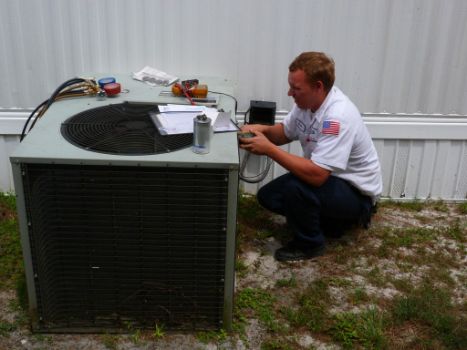
Excessive Humidity
A properly functioning AC unit should regulate humidity levels in your home, providing a comfortable indoor environment. If your home feels overly humid or sticky during the cooling season, it might be a sign that your AC unit is not operating correctly and may need to be replaced.
Installing a Central AC Unit: DIY vs. Hiring a Pro
Mounting a central AC unit isn’t a task to be taken lightly and is best left to professionals. While acquiring an air conditioner from a vendor and attempting self-installation is plausible, the procedure demands significant expertise to accomplish properly. One needs certification from the Environmental Protection Agency (EPA) to handle refrigerants, making it generally more secure to enlist the services of a state-authorized local HVAC expert for the installation.
For households that haven’t previously had a central AC system, installation necessitates the incorporation of new breakers in your electrical panel, running new wires through your foundation, integrating new ductwork with your existing HVAC system, constructing and finishing areas for the ductwork, and securely placing your unit on metal brackets or a concrete base. It’s a somewhat intricate task that a trained HVAC specialist would better handle.
The exceptions are window AC units and portable air conditioning units. These systems do not require any major alterations like ductwork or breaker installation. They can be installed by a handy homeowner without needing a professional HVAC contractor.
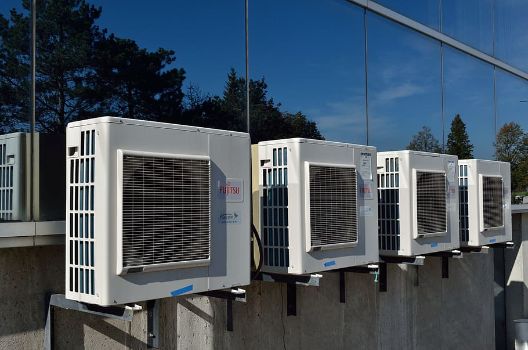
Different Ways to Pay for Central AC Installation
- Cash or Savings: If you have enough savings, paying for your AC installation outright can save you from paying interest on a loan or credit card.
- Credit Card: You can use a credit card to finance your AC installation, especially if you have a card with a low-interest rate or a 0% introductory APR offer.
- Personal Loan: Personal loans can be a good option if you need a longer repayment period and want to avoid high-interest credit card debt. They often offer lower interest rates, particularly if you have good credit.
- Home Equity Loan or Line of Credit: These options allow you to borrow against the equity in your home. They typically have lower interest rates than credit cards or personal loans, but remember that your home is used as collateral.
- Energy Efficient Mortgages (EEMs): EEMs are loans for energy-efficient home improvements. They can be a great option if you’re installing a high-efficiency AC system.
- Retailer Financing: Some HVAC companies offer financing options, often with competitive interest rates. Be sure to read the terms carefully.
- Government Programs: Some government programs offer loans or grants for home improvements that increase energy efficiency, such as installing a new AC system. Check with local or state agencies to see what might be available.
- Rent-to-Own Programs: Some companies offer rent-to-own programs for HVAC systems, where you make monthly payments towards owning the system outright. These programs can be helpful if you cannot afford the full cost upfront.
Tips to Save Money on Central AC Installation
- Research and Compare Quotes: Gather estimates from multiple HVAC professionals. Comparing prices can help you find the best deal.
- Consider Energy-Efficient Units: Although they can be more expensive upfront, energy-efficient units can save you money in the long run through reduced energy bills.
- Install During Off-Peak Seasons: HVAC professionals may offer discounts during cooler months when demand for their services is lower.
- Inquire About Rebates and Incentives: Some energy companies offer rebates or incentives for installing energy-efficient units.
- Maintain Your Existing System: Regular maintenance can extend the life of your existing AC unit, delaying the need for replacement.
- Buy the Correct Size: Buying a unit that’s the right size for your home ensures you’re not wasting money on unnecessary capacity.
- Plan Ahead: Integrating the HVAC system into your plans can help reduce installation costs if you’re constructing a new home or remodeling.
- Use a Licensed Contractor: They’re more likely to install the system correctly, preventing future problems and saving you money in the long run.
- Opt for a Simpler System: If possible, choose a system that doesn’t require extensive ductwork or additional home modifications.
- Bundle Services: If you also need a furnace or other home services, see if bundling can save you money. Some companies offer discounts for multiple services.
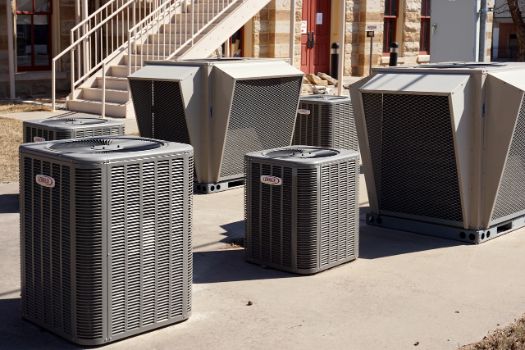
Frequently Asked Questions
What are EER and SEER ratings?
EER (Energy Efficiency Ratio) and SEER (Seasonal Energy Efficiency Ratio) ratings measure the energy efficiency of air conditioning units. EER is the ratio of the cooling capacity (in BTU) to the power input (in watts) at a given temperature. SEER, on the other hand, is the total cooling output during a typical cooling season divided by the total electric energy input.
Is a central air unit a good investment?
Yes, a central air unit can be a great investment. It can significantly improve the comfort of your home, particularly during the hot summer months. A central air unit is often more energy-efficient than individual air conditioning units, potentially leading to lower energy bills.
Does a central air unit increase a property’s worth?
A central air unit can increase a property’s worth, particularly in hotter climates where air conditioning is necessary. Potential buyers often view central air as desirable, so installing a central AC unit could increase your home’s resale value.
What ton AC do I need?
The size of the AC you need depends on the size of your home. Generally, a rule of thumb is 20 BTU for each square foot of living space. However, this calculation can affect factors like the number of windows, insulation, and local climate. It’s best to consult an HVAC professional to determine the right size for your home.
How can I maintain my central AC unit?
Routine maintenance of a central AC unit includes changing or cleaning the filters regularly, keeping the outdoor unit clear of debris, and having a professional perform annual service checks. These actions can help ensure your unit works efficiently and can prevent costly repairs down the line.
How long does it take to install a central AC unit?
The time it takes to install a central AC unit can vary based on several factors, including the type of unit and the specific requirements of your home. However, on average, it typically takes a professional team about a day to install a new central AC unit.
What temperature should I keep my AC to save money?
The U.S. Department of Energy recommends setting your air conditioner at 78 degrees Fahrenheit when you’re home in the summer to save on energy costs. When you’re away, increasing the temperature a few degrees is beneficial to save even more.